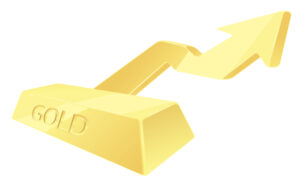
No Gold Sticker Shock – Citi’s Aakash Doshi on High Precious Metal Prices And ‘Inelastic Buyers’
The comments below are an edited and abridged synopsis of an article by Michael McCrae, KITCO News
Central bank buyers, traditionally viewed as price-sensitive entities in the gold market, may exhibit a surprising resilience to the escalating gold price, according to Aakash Doshi, NAM Head of Commodities Research at Citi. Doshi discusses the evolving dynamics of gold demand, emphasizing the shifting landscape wherein jewelry fabrication, historically dominant, now shares the market stage with investing, industrial uses, and notably, central bank acquisitions.
Historically, jewelry fabrication has been the primary driver of gold demand, accounting for approximately 50% to 55% of the market. However, Doshi points out a transformative trend over the past decade or so, particularly catalyzed by the Great Financial Crisis, wherein central banks transitioned from being net sellers to net buyers of gold. This strategic shift has seen central banks consuming over 1,000 tons per annum, representing a substantial withdrawal of supply from the market, now comprising up to 28% of annual mine production.
Contrary to conventional wisdom that higher metal prices would dampen demand, especially from jewelry manufacturers, central banks appear less price-sensitive in their gold acquisitions. Doshi characterizes their buying behaviour as more strategic and posits them as potentially among the most price-inelastic buyers in the market.
Doshi’s research note forecasts a bullish trajectory for gold, envisioning a price surge to $3,000 per ounce by 2025. This bullish outlook stems from robust investor demand, particularly evident in increased sales of physical gold such as bars and coins since the onset of the pandemic. Central bank purchases, especially prevalent in emerging markets, contribute significantly to this upward trend, not only setting a higher price floor, but also stabilizing gold’s volatility.
Despite a 20% uptick in the gold price since February, Doshi contends that conventional drivers like a weaker dollar or lower interest rates haven’t been the primary catalysts. Instead, he attributes gold’s bullish momentum to the convergence of robust physical demand and anticipation of macroeconomic factors catching up. Central to this narrative are escalating global debt levels post-pandemic, propelling alternative fiat demand and potentially reshaping gold’s price dynamics.
Doshi suggests that gold’s previous ceiling of $1,000 per ounce may now serve as a support base, with the price gravitating towards $1,900 to $2,000. This shift indicates the potential for sustained higher prices, further reinforced by the favourable risk-reward ratio, especially amid the looming specter of a US recession. Doshi’s analysis paints a compelling picture of a gold market undergoing significant transformation, with central banks emerging as pivotal players steering the trajectory towards higher price thresholds. This narrative underscores the intricate interplay between evolving demand dynamics, macroeconomic trends, and institutional behaviour, all converging to shape the future landscape of the gold market.

